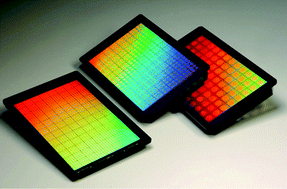Biosensor technologies that have been primarily used in the past for characterizing biomolecular interactions are now being used to develop new approaches for performing cell-based assays. Biosensors monitor cell attachment to a transducer surface, and thus provide information that is fundamentally different from that provided by microscopy, as the sensor is capable of monitoring temporal evolution of integrin–surface interactions that are difficult to measure by other means. Label-free biosensor technologies are especially advantageous for monitoring the behavior of cells because they do not require stains that typically result in cell death, and are not subject to effects such as photobleaching. As a result, cells can be quantitatively monitored in their culture environment over an extended period of time while processes such as proliferation, apoptosis, cytotoxicity, chemotaxis, ion channel activation, and membrane-bound protein activation are modulated by the introduction of a variety of chemical or biological stimuli. This review describes the application of photonic crystal optical biosensor microplates to a variety of cell-based assays. Detection instruments for photonic crystals measure the aggregate behavior of large cell populations, or, using recently developed biosensor imaging detection, independent monitoring of individual cells. These technological developments offer the ability to perform assays with a limited number of available cells for applications such as high throughput screening with primary cells or stem cells.

You have access to this article
 Please wait while we load your content...
Something went wrong. Try again?
Please wait while we load your content...
Something went wrong. Try again?


 Please wait while we load your content...
Please wait while we load your content...